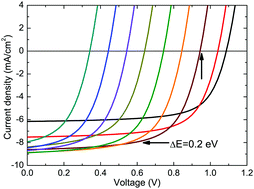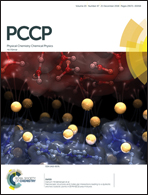Optimum driving energy for achieving balanced open-circuit voltage and short-circuit current density in organic bulk heterojunction solar cells
Abstract
Organic bulk heterojunction solar cells generally suffer from a trade-off between the open circuit voltage (Voc) and the short circuit current density (Jsc) under a given donor/acceptor (D/A) interfacial energetic offset (or the so-called driving force). Here we theoretically investigate the optimum driving energy required for achieving the balanced Jsc and Voc simultaneously. To this end, the Jscversus the driving force ΔE curves are calculated under two different charge separation mechanisms by employing the drift-diffusion method. For the Marcus incoherent mechanism, the curve features a high plateau in a broad range of ΔE starting from 0.2 eV, which is due to the accumulation of undissociated excitons within their lifetime and signifies the possibility of obtaining a sizable Jsc under a ΔE value much smaller than the reorganization energy. After incorporating both the electron and hole transfer pathways into the device model, the calculated J–V curves are comparable to experimentally measured ones foractual blended systems of different driving forces. For the coherent mechanism, it is demonstrated that the maximum Jsc can also be achieved under the ΔE of 0.2 eV if a large proportion of the high-lying delocalized states are harvested through tuning the density of states for the charge transfer excitons to reduce the sub-gap states. This theoretical work revealed quantitatively the relationship between the interfacial energy offsets and device performance, and also provides some guidelines for identifying the macroscopic features of the actual charge separation mechanisms in bulk heterojunction solar cells.



 Please wait while we load your content...
Please wait while we load your content...